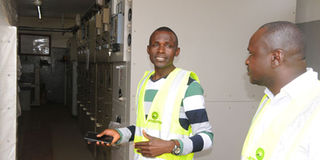Shs21 trillion invested in energy in 13 years - ERA

Both government and the private sector continue to invest in the energy sector with the view of bringing down the cost of electricity. FILE PHOTO
What you need to know:
- Isimba, which is expected to be commissioned in December or early next year, has seen government invest more than $1.5b (Shs5.6 trillion).
- On its part, Umeme, the country’s largest power distributor has invested about $500m (Shs1.8 trillion) in network upgrade and expansion, among others. There has also been, she said, other investments, especially in small energy projects.
Kampala. More than $5.7b (Shs21 trillion) has been invested in different segments of the energy sector, according to the Electricity Regulatory Authority chief executive officer Ziria Tibalwa.
The money, which has been invested in generation, transmission and distribution, according to Ms Tibalwa is spread out in more than 13 years following the liberalisation of the energy sector in 2005.
In an interview last week, Ms Tibalwa told Daily Monitor that: “From the private side of capital we have [pooled] in the sector, we are talking about $5.7b.”
In 2005, government collapsed Uganda Electricity Board into different units including generation, transmission and distribution.
The privatisation saw the entry of private entities such Umeme, Eskom and Electromaxx, among others which took over some of the roles previously done by UEB.
However, government maintained some key segments such as transmission and generation under its supervision.
According to Ms Tibalwa, Bujagali dam was built at about $1b (Shs3.7 trillion) while investment in Karuma is estimated at about $2b (Shs7.5 trillion).
Isimba, which is expected to be commissioned in December or early next year, has seen government invest more than $1.5b (Shs5.6 trillion).
On its part, Umeme, the country’s largest power distributor has invested about $500m (Shs1.8 trillion) in network upgrade and expansion, among others. There has also been, she said, other investments, especially in small energy projects.
While the investment is largely from the private sector, government equally invests in energy, Ms Tibalwa said, through concessional loans and grants in the transmission segment.
“Since capital comes at a very high cost, and because the transmission segment is very capital intensive, to acquire funding through private capital would negatively affect the tariff path,” she said.
Government, she said, seeks concessional loans at an average interest rate of 1 per cent with a grace period of about five years and adequate recovery period.
Tariffs vs investment
According to Ms Tibalwa, most of the investments are in generation, which have a long recovery term of between 20 and 40 years. This is done to ensure that it does not negatively impact tariff structures, which in essence means that tariffs are structured to accommodate loan repayment for long term projects such Isimba, Karuma and Bujagali.
Ms Tibalwa said, Umeme has through the tariff structure, already recovered about $140m (Shs524b) of its investment.
Capital recovery in the energy sector is spread out over a long period of time.
Key gaps that need investment, according to ERA, include grid expansion, upgrading from wooden poles to steel and replacement of ageing equipment such as transformers among others.
Some project investments
Project Amount
Bujagali dam Shs3.7 trillion
Karuma dam Shs7.5 trillion
Isimba dam Shs5.6 trillion
Umeme Shs1.8 trillion
Others Shs2.4 trillion




